In the early morning hours of January 7, 2025, Mario Tama, a Getty Images photographer based in Los Angeles, was woken up by intense winds. Every year, Southern California experiences Santa Ana winds, known for the hot, dry weather they bring. But these winds came early, and with record strength. Experts were warning that the wind, combined with high levels of flammable vegetation, created dangerous fire conditions.
That morning, Tama had an “ominous feeling.” “You just knew it was going to be bad,” he says. The wildfires that broke out that day were just the beginning of a series of catastrophic blazes that burned through Los Angeles County. More than 40,000 acres burned, and tens of thousands of homes and businesses were destroyed. The Palisades Fire alone burned more than 10,600 properties, and the Eaton fire another 9,200.
And Tama was there to capture them. As a staff photographer at Getty Images for more than 20 years, Tama has borne witness to hurricanes, fires, droughts, and other disasters year after year. But the L.A. fires were happening in his own backyard. That proximity added another layer to his work.
Photojournalists usually only get to spend a week or two on the ground when visiting a far-off location, before they’re pulled to cover something else. With the L.A. fires, Tama wanted—and he says his editors encouraged him—to document “every stage of the journey.” Since January, he’s been photographing not only the fires, but also the clean-up efforts, how rows and rows of burnt shells of homes have turned into cleared lots, the way greenery has begun to grow back through the ashes, and how the community continues to come together. As national headlines move on to the latest news or the most recent disaster, Tama’s images show the drawn-out reality of living through the climate crisis.
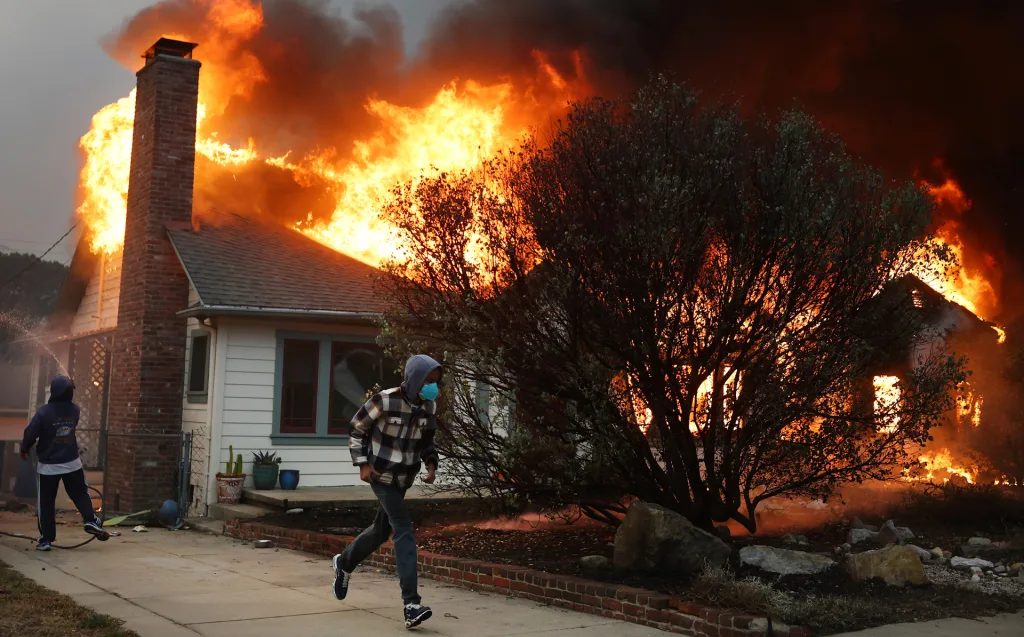
An Incomprehensible Disaster
On January 7, when the fires began, Tama started by heading to the Palisades, where the first fire was reported. The strong winds meant firefighters couldn’t do frequent aerial drops to disperse water or flame retardant onto the blazes, because it was difficult for the helicopters to fly. “It just seemed like they weren’t able to stop it at all,” he says.
Then he got an alert about the Eaton Fire, and headed that way, though it took hours to get through the traffic. Covering two major fires simultaneously was a shock. Shooting the Eaton fire that evening, he remembers watching embers blowing from a home and swirling in the wind, and seeing smoke in all directions. Those embers, caught in the record-high gusts, are what caused the fire to spread so rapidly.
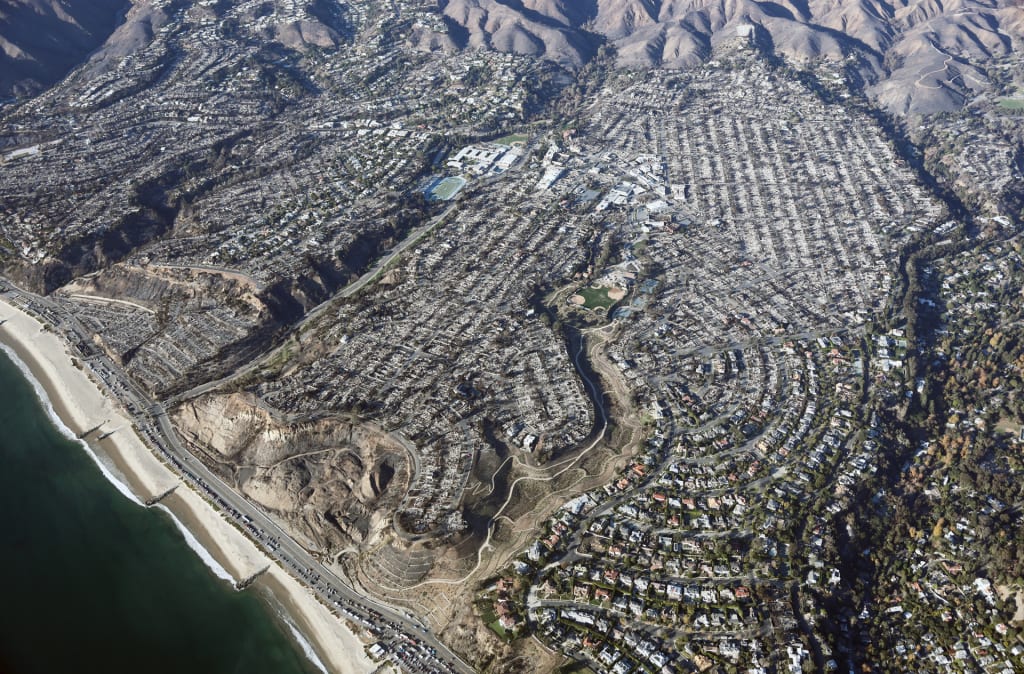
The disaster quickly reached an intense scale, and to capture that, Tama knew he needed aerial images. “There’s no way from the ground to do it,” he says. Two days after the fires began, during a respite in the winds, he was able to get into a helicopter and travel over the Palisades. As the helicopter first passed over the Santa Monica Pier, he saw a ”sea of white and smoke, of what used to be families’ homes,” he says. “To think of all those families, it’s just completely heartbreaking—and still, to me, somewhat incomprehensible.”
As a photojournalist, Tama is always trying to make the reality on the ground tangible to viewers across the world. But in the case of the L.A. fires, he says it was difficult to actually translate what he witnessed. “I feel like, to this day, no image, no matter how hard we try, can sum up the scale of the loss and devastation, and the human toll,” he says. “So the only thing I can do is just keep going back as much as I can.”
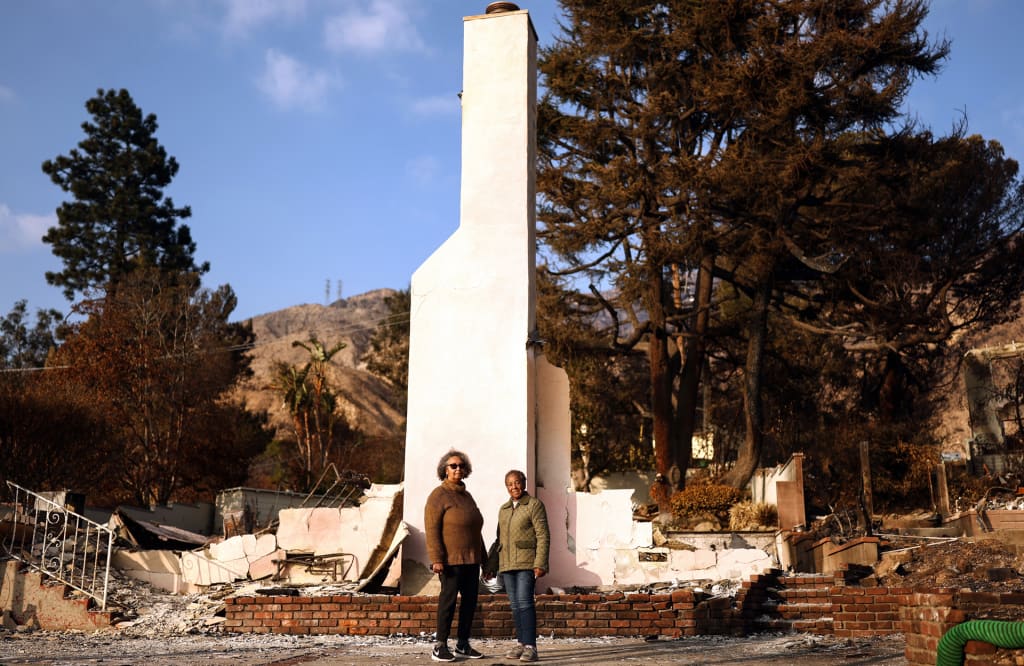
Documenting life after the fires
The fires have since been contained, but L.A. residents are still living with the wake of the disaster. They’re navigating the loss of their homes and the process of rebuilding. They’re battling with insurance companies and the bureaucracies of FEMA. They’re volunteering to distribute food—and Tema says those volunteers include people who lost their own homes.
Grassroots community groups are even trying to save trees in the burn zones. “The trees were a really important part of those communities,” he says. “You’re seeing some of these trees that looked like they were definitely dead, [now] with green growth coming out,” Tama says. “It kind of gives you a little hope that nature is coming through.”
Community events continue to bring people together to talk through their experiences. “No one can understand what people went through except their neighbors,” Tama says. He’s also documented congregations that, though their churches were destroyed, have met in other venues. He has heard a number of times that it wasn’t the building that made the church, it was the people.
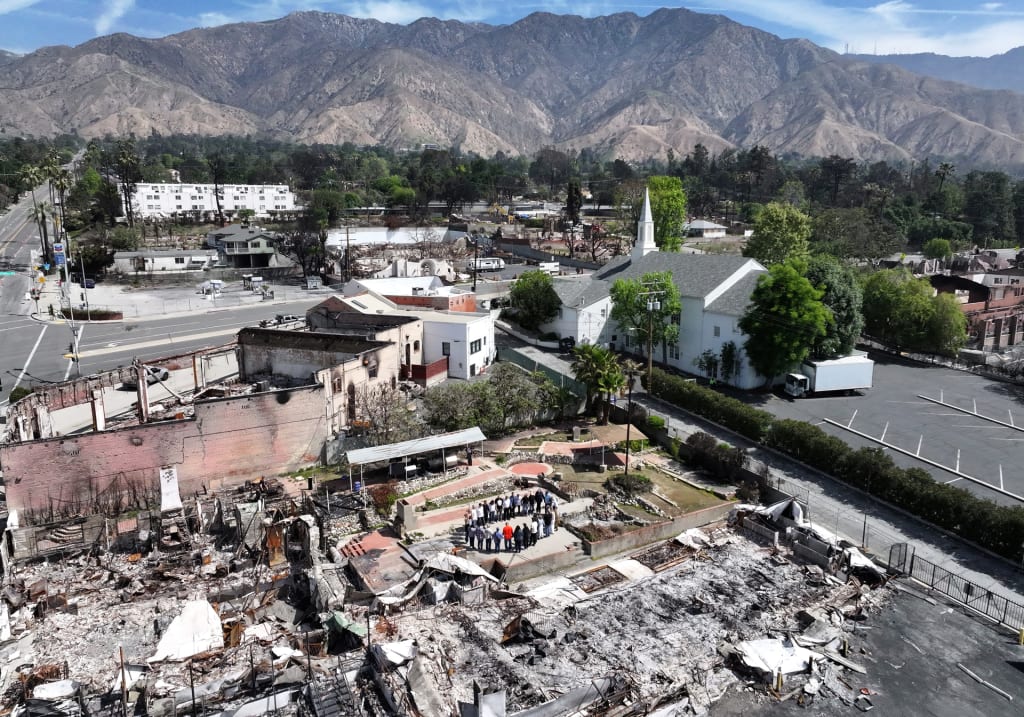
One aerial photograph Tama captured shows a prayer circle on the grounds of a destroyed church property in April, months after the fires. The current bishop had been attending that church since he was a child. He’s planning to rebuild, but in the meantime he organized this circle to pray for the community. The group can be seen holding hands amid a mess of gray ash and rubble. But even through all that gray, the picture shows some greenery growing back. “It felt like a powerful moment speaking to the strength of the community,” Tama says.
In another image, also taken in April, two Altadena residents excavate calla lilies from outside the burnt remains of their home. This couple welcomed Tama in to document their story, he says, and he learned that the flowers were originally planted by the woman’s father; the home had been in her family for 25 years. Before the Army Corps cleared the lot of the burnt debris, they noticed the flowers had regrown, and went to rescue them. “They were saving those, and they’re planning to replant them at their new lot,” Tama says.

The importance of climate photography
Since Tama is a Los Angeles resident himself, he feels a particular pressure to communicate the loss and the suffering across Southern California. And as a photographer who has documented climate disasters for years, he also knows the value of sharing such images. “You want everyone to see this and to know that this happened, so that people are aware that these disasters are becoming more frequent, and communities and local governments everywhere need to be ready,” he says. The more these images make it to the public, he says, the more people can start to wrap their heads around what our current climate reality looks like.
The country has changed dramatically since the L.A. wildfires, which adds even more importance to their documentation. The fires broke out when Joe Biden was still in office; since then, President Donald Trump has waged attacks on climate resources, taking steps to dismantle FEMA, and cut other forms of disaster recovery funding. He’s also gutted offices like the National Oceanic and Atmospheric Association, which includes weather monitoring that helps communities prepare for climate disasters.
Even more broadly, he’s attacked and hobbled clean tech like renewable energy, and pushed for an increase in fossil fuels—the burning of which leads to more greenhouse gasses in our atmosphere, directly exacerbating climate disasters like wildfires, hurricanes, and tornados.
Tama knows that images “have a way of searing themselves into our consciousness, our brain, in a way that statistics never will be able to do.” He hopes his continued documentation of the L.A. fires and their aftermath speaks to people across the country about the reality of living through a climate disaster. “If there’s going to be less support from places like FEMA,” he says, “it’s even more important for local governments, local communities, to know what’s going on and to understand how to prepare for this future.”
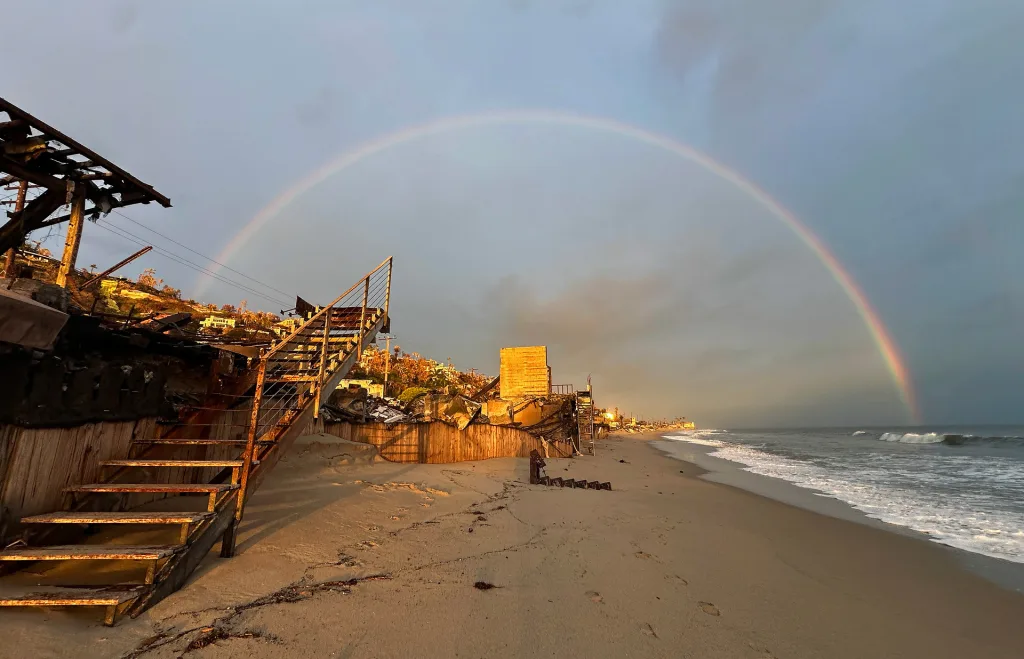
Last year, Tama was on the ground in North Carolina covering Hurricane Helene. He spoke after that, too, about seeing the level of devastation, and the strength of community bonds. Even though the two disasters are drastically different—and “Appalachia and Southern California are not usually mentioned in the same sentence”—he sees a through line. “What those two disasters speak to is the larger issue of, this isn’t a Red State or a Blue State issue,” he says. “It’s happening in all states, and we all need to be ready and prepared and paying attention.”
